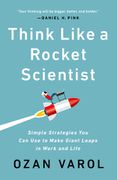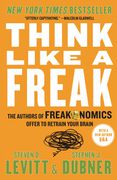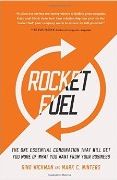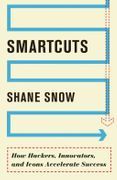
A 5 Minute Overview Of
Think Like a Rocket Scientist
Simple Strategies You Can Use to Make Giant Leaps in Work and Life
About the Author
Ozan Varol moved to the United States from Turkey at age 17 to attend Cornell University and study astrophysics. He served on the operations team for the 2003 Mars Exploration Rovers projects which successfully sent two rovers to Mars. He then went to the University of Iowa law school, graduated first in his class, and became a law professor at Lewis & Clark Law School. He is a popular keynote speaker, the author of numerous award-winning articles, and his work has been featured in the Wall Street Journal, Newsweek, Time, and the Washington Post.
The Main Idea
When President John F. Kennedy pledged in 1962 that America would land a man on the Moon and return him safely to the Earth, he noted that achieving this would require a rocket "made of new alloys, some of which have not yet been invented, capable of standing heat and stresses several times more than have ever been experienced, fitted together with a precision better than the finest watch, sent on an untried mission, to an unknown celestial body".
In other words, to meet the national goal, the country was relying on rocket scientists to figure out how to get the job done. And notably, the 1960s were an era where computers had only just been invented, and had not yet moved from the lab to the desktop.
So how did they achieve that? The race to the moon generated a new set of nine main principles which would later be termed "critical thinking skills" which the rocket scientists used to pull off what seemed impossible. Just like a rocket, these principles can be batched into three stages:

To think like a rocket scientist is to look at the world through a different lens. Rocket scientists imagine the unimaginable and solve the unsolvable. They transform failures into triumphs and constraints into advantages. They view mishaps as solvable puzzles rather than insurmountable roadblocks. They know that the rules aren't set in stone, the default can be altered, and a new path can be forged.
Simple Strategies to Make Giant Leaps
1st stage — Launch — Principles 1-4. To think like a rocket scientist, you first have to ignite your thinking. This will be a matter of using uncertainty to your advantage, and having the discipline to always reason from first principles. You also need to avoid the status quo's invisible rules which constrain your thinking, and look for the elegance that comes from subtracting rather than adding all the time. Rocket scientists, businesses, and world-class performers have always used thought experiments and moonshot thinking to come up with original ideas, and you should too.
2nd stage — Accelerate — Principles 5-7. Once you've generated some original ideas in the first stage, you then need to propel your ideas forward and see which can stand on their own two feet. The best way to do that is by reframing your questions to open up more possibilities, and by testing and experimenting like a rocket scientist. Astronauts train for years to be able to respond immediately to worst case scenarios and you should take that as a clue for your own success.
3rd stage — Achieve — Principles 8-9. The third and final stage involves learning that unlocking your full potential is always a mix of successes and failures. The world might be in love with the "Fail fast, fail often" mantra but don't forget the aim is to figure out what works, and then to take full advantage of that. Top performers know uninterrupted success is a warning sign and respond appropriately.
Key Takeaways
Rocket scientists do most of their thinking in thought experiments, and then test their theories in real-world conditions. They design their tests to reach an object's breaking point, and find out where it is. Their goal is never to confirm what went right but to identify what went wrong so it can be rectified now, not later. They call this: "Test as you fly, fly as you test" which is principle #7 of 9.
Your assumptions are your windows on the world. Scrub them off every once in a while, or the light won't come in
Breakthroughs, contrary to popular wisdom, don't begin with a smart answer. They begin with a smart question
Summaries.Com Editor's Comments
Elon Musk has just cashed out of PayPal with a $165 million personal fortune, so does he retire to the beach sipping drinks all day by the pool? Nope. He decides the time is right to pursue his passion project — building a colony on Mars so humans will become an interplanetary species. So Elon goes to some American rocket companies and finds out rockets will cost $130 million each just for the launch alone. Suffering from sticker shock, he thinks "I'm sure the Russians can do it cheaper than that!" and heads off to Russia. After several trips, the best they offer him are decommissioned intercontinental ballistic missiles for $20 million apiece. Still too expensive.
So Musk borrows some books, fires up a spreadsheet, and starts figuring it out. He soon realizes the materials to build a rocket are only about 2 percent of the cost of a rocket, which seems like a crazy ratio to him. So the way ahead is obviously to start your own company and build the rockets in-house. That's how SpaceX came into existence, and ultimately became the first privately owned company in history to put a rocket into orbit. It's also the perfect example of reasoning from first principles rather than accepting the status quo. This is one of nine principles rocket scientists use, which are explained in detail in Ozan Varol's book, How to Think Like a Rocket Scientist.
The great thing about this book is Ozan Varol walks the talk. He was part of the Mars Exploration Rovers project, which in 2003 sent two rovers to Mars. The rovers were designed to operate for ninety days, but one ended up sending back pictures for six years, while the other roamed around Mars sending pictures back to Earth for more than fourteen years. Rocket scientists have a unique way of thinking, which applies incredibly well to business as well. This book explains why. Great book. Thoroughly enjoyed it.
Want in-depth 30-minute summaries?
In addition to this 5-minute overview, Summaries.Com has a premium 30-minute summary of this book and 1,000+ more, to help you advance your career and business.
Check Out Summaries.com Premium Plans Today!Want more 5-minute Snapshots?
To get a new 5-minute business book snapshot each week, sign up for the Summaries.com free plan.
Sign Up for the Summaries.com Free PlanRocket Science 101 Collection
If you enjoyed this summary, here is a collection of related business book summaries, to help you get ideas and strategies that will give you an edge over your competition.
These summaries will expose you to some clever ideas about business as it could be.
Buy Rocket Science 101 Collection (5 x 30-Min Summaries)
Think Like a Rocket Scientist
Simple Strategies You Can Use to Make Giant Leaps in Work and Life
by Ozan Varol

Think Like a Freak
The Authors of Freakanomics Offer to Retrain Your Brain
by Steven Levitt and Stephen Dubner

How to Think Like Leonardo Da Vinci
Seven Steps to Genius Every Day
by Michael J. Gelb

Rocket Fuel
The One Essential Combination That Will Get You More of What You Want
by Gino Wickman and Mark Winters

Smartcuts
How Hackers, Innovators, and Icons Accelerate Success
by Shane Snow